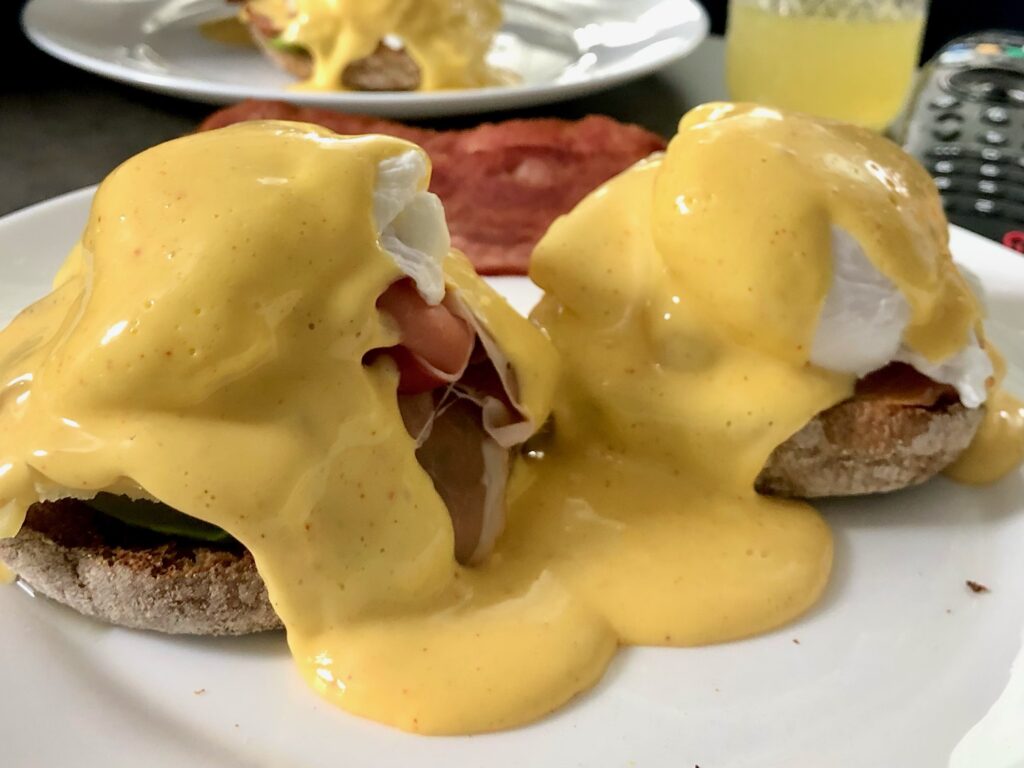
Eggs Benedict takes home the award for the most quintessential brunch dish. If it’s on the menu at brunch, there’s a good chance I’m ordering it. Impress your guests with a fancy brunch at home with this Eggs Benedict recipe.
The key to a delicious Eggs Benedict is perfectly poached eggs and a well-made hollandaise sauce. But, don’t let the complexity of each of the components intimidate you. This recipe makes each part simple and easy with a few tricks.
Poached Eggs
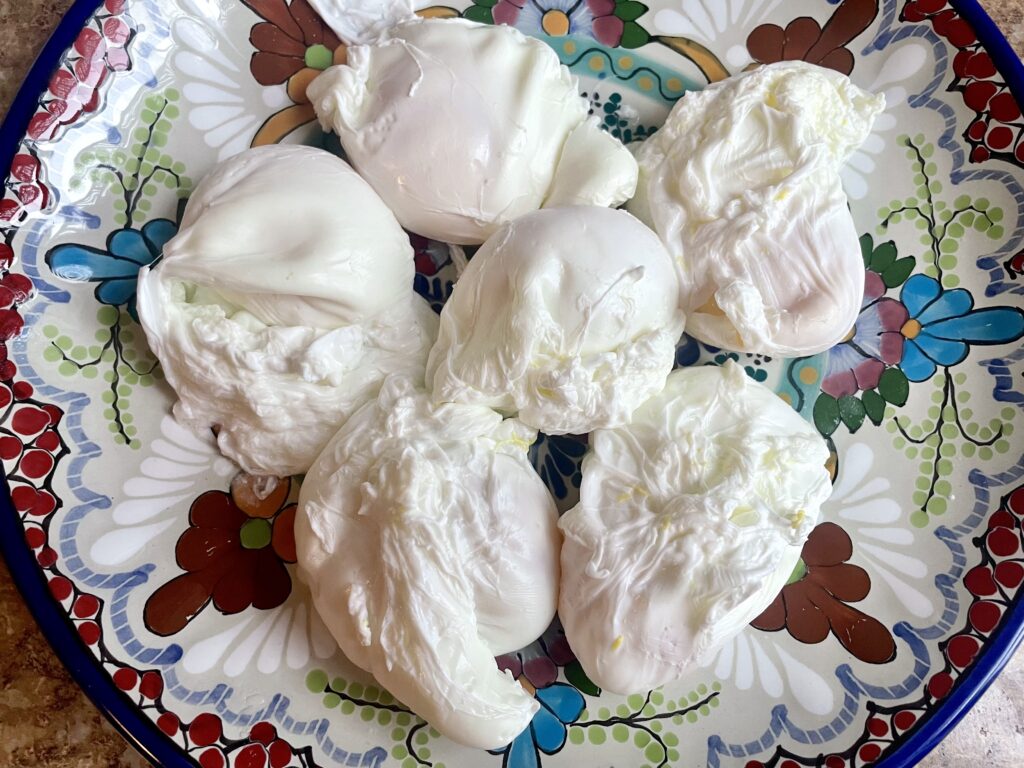
For poached eggs, we’ll use Gordon Ramsay’s simple method that only takes 90 seconds per egg. The trick is to add vinegar to boiling water and make a vortex for the egg to poach perfectly. I like to make each egg separately, but to save time you can add multiple eggs to the same simmering pot (depending on the size of the pot)
Here is an example of how to create the vortex or whirlpool by whisking the boiling water:
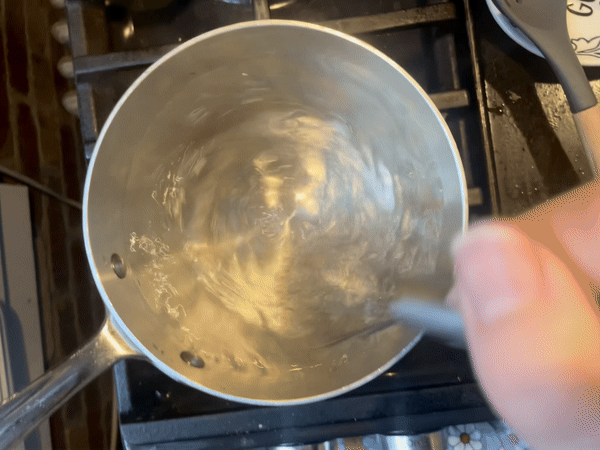
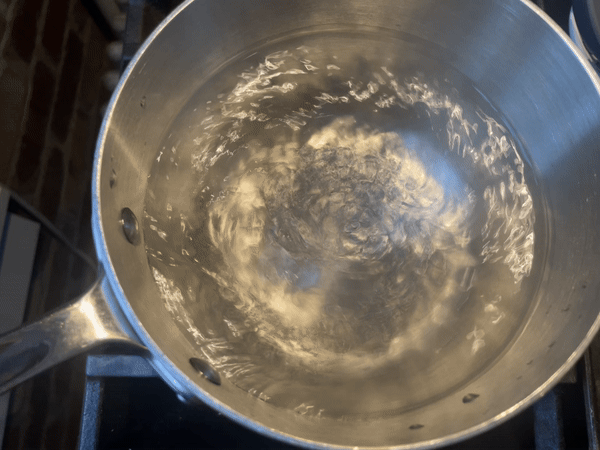
You’ll drop your egg in the center of the whirlpool and cook it for exactly 90 seconds. I like to keep the stopwatch on my phone running instead of a timer so I can anticipate exactly when I need to take out the egg.
Hollandaise Sauce
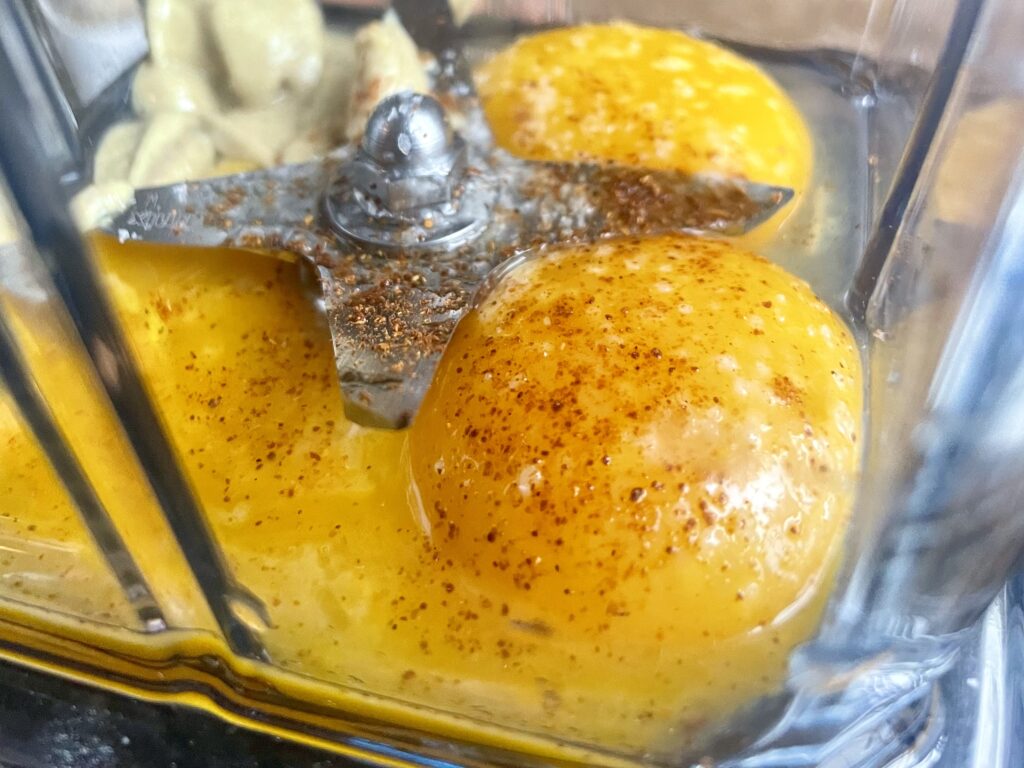
For hollandaise sauce, many recipes use a double boil method, which can be a challenge. Luckily, this Benedict recipe borrows a quick and easy method from Downshiftology to make the hollandaise sauce. We’ll make our hollandaise sauce in a blender, so it’ll be ready within minutes.
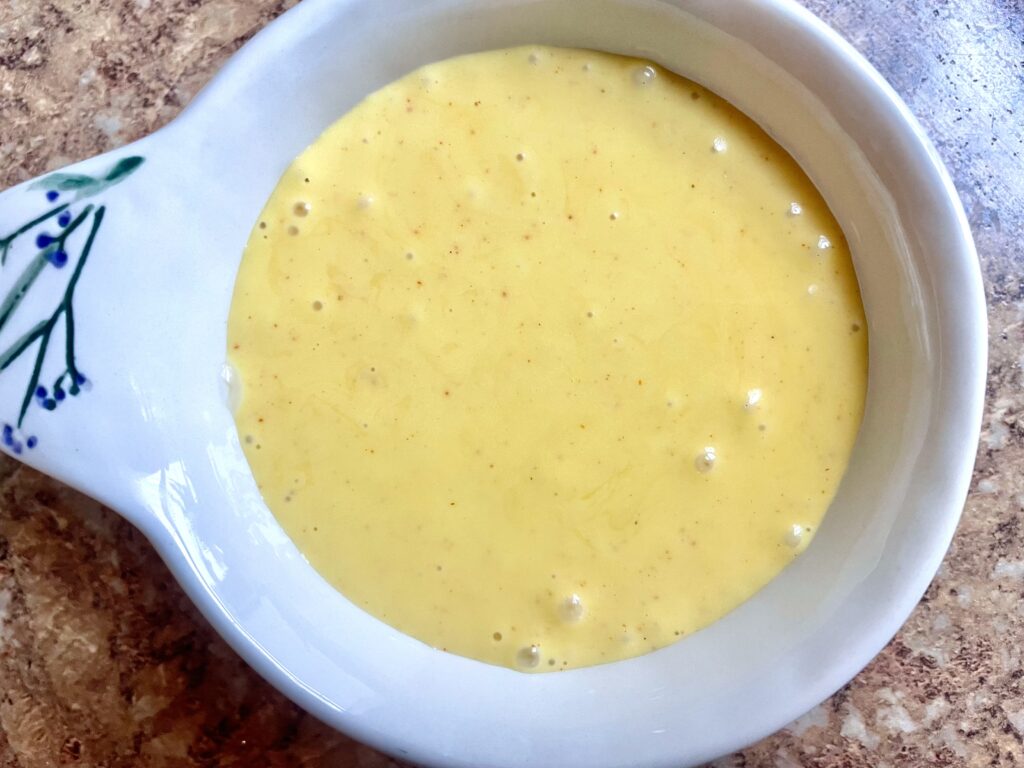
Important Note: Eggs Benedict needs to be served immediately. The eggs and the hollandaise sauce cannot be reheated because the eggs will cook all the way through, resulting in hard yolks and a clumpy sauce.
Classic Eggs Benedict
Equipment
- Blender
Ingredients
- 12 eggs 4 yolks, 8 entire eggs
- white vinegar
- 1/2 lemon juiced
- 1 tsp Dijon mustard
- 1/2 tsp paprika
- 1/2 tsp kosher salt
- pinch of cayenne
- 1 cup melted butter 2 sticks of butter
- 4 English muffins toasted and cut in half
- 8 slices Canadian bacon
Instructions
Before you begin
- Toast 4 English muffins and heat 8 slices Canadian bacon before you start poaching eggs and making the hollandaise sauce. This needs to be done before the hollandaise sauce is ready for quick serving while the sauce is still hot. You can also do this during the in-between times while poaching the eggs but be mindful not to overcook your eggs.
Poached Eggs
- Boil water in a deep saucepan or pot. While the water reaches a boil, crack an egg in a small bowl or ramekin.
- Once the water reaches a boil, add a splash of white vinegar. You may need to wait a couple of seconds until the water reaches a boil again after adding the vinegar.
- Whisk the boiling water to create a whirlpool or vortex. When you stop whisking, the boiling water should be spinning.
- Quickly yet carefully transfer the cracked egg from the small bowl or ramekin into the middle of the whirlpool/vortex of boiling water.
- Adjust the temperature to achieve a soft simmering boil and cook the egg for exactly 90 seconds.
- After 90 seconds, use a slotted spoon to transfer the egg from the boiling water to a plate until you’re ready to serve.
- Repeat the process with each egg. You’ll want to account for 2 eggs per person.
Hollandaise Sauce
- Separate the whites from the yolks of 4 eggs.
- Add 4 egg yolks to the blender.
- Add the juice of 1/2 lemon (about 2 tbsp), 1 tsp Dijon mustard, 1/2 tsp paprika, 1/2 tsp kosher salt, and a pinch of cayenne.
- Blend on high for a few seconds until combined.
- Melt 1 cup melted butter (2 sticks) in the microwave. Melt it in 30 second intervals and monitor it so it does not splatter everywhere.
- Turn the blender on again on medium speed and slowly add hot butter into the blender. Make sure the butter is still hot and the stream of hot butter is slow and steady.
- Blend until all the hot butter has been poured in and the hollandaise sauce is ready.
- Turn off the blender and check to see if it needs more seasoning. You might want to add a pinch more of cayenne if you want a kick.
Assembly and Serving
- Place one English muffin (cut into two) on a plate.
- Add a slice of Canadian bacon to each muffin.
- Carefully transfer a poached onto each muffin.
- Pour hot hollandaise sauce on top and serve.
Building your Benedict
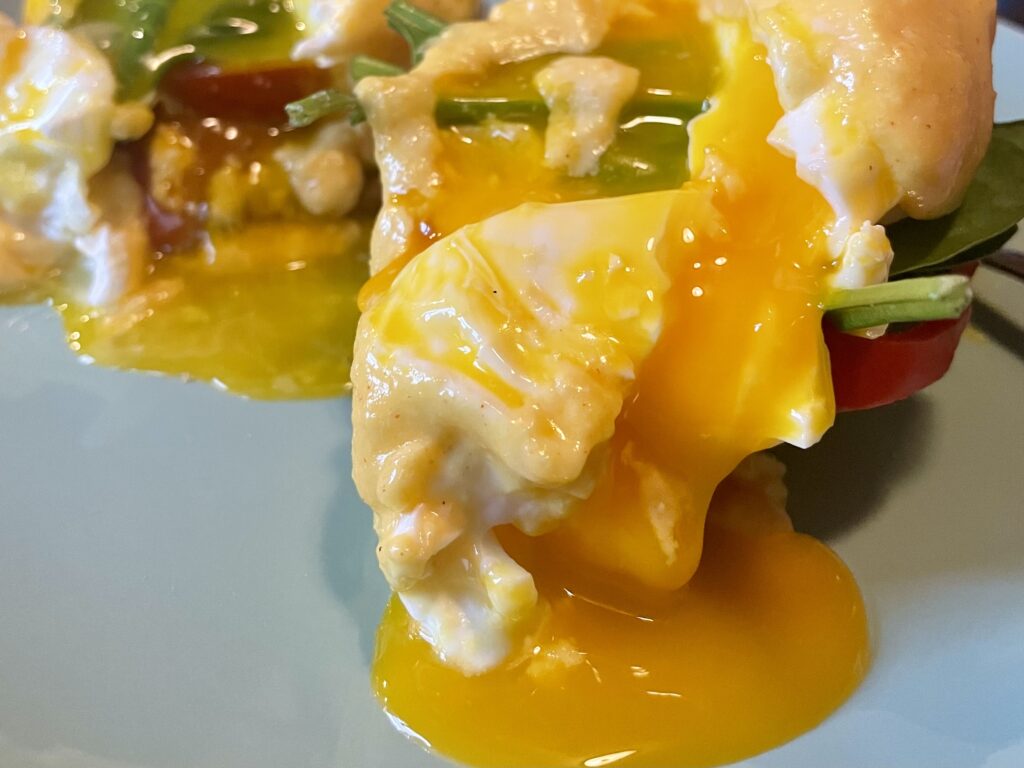
This recipe holds the building blocks for any kind of Eggs Benedict — classic, Florentine, Norwegian, and more. You can swap out the base, protein, and toppings to create your own spin.
The Base
The base of a traditional Eggs Benedict is a toasted English muffin. But, you can use other kinds of bread as your base like a slice of sourdough or even a croissant.
The Protein
A classic Eggs Benedict has Canadian bacon, which tastes more like ham than the bacon you associate with breakfast. You can use thick-cut bacon, prosciutto, or even smoked salmon as your protein.
The Toppings
I always add extra toppings to my Benedict at home. You can add tomato, spinach, avocado, cheese, and so much more.
Reply